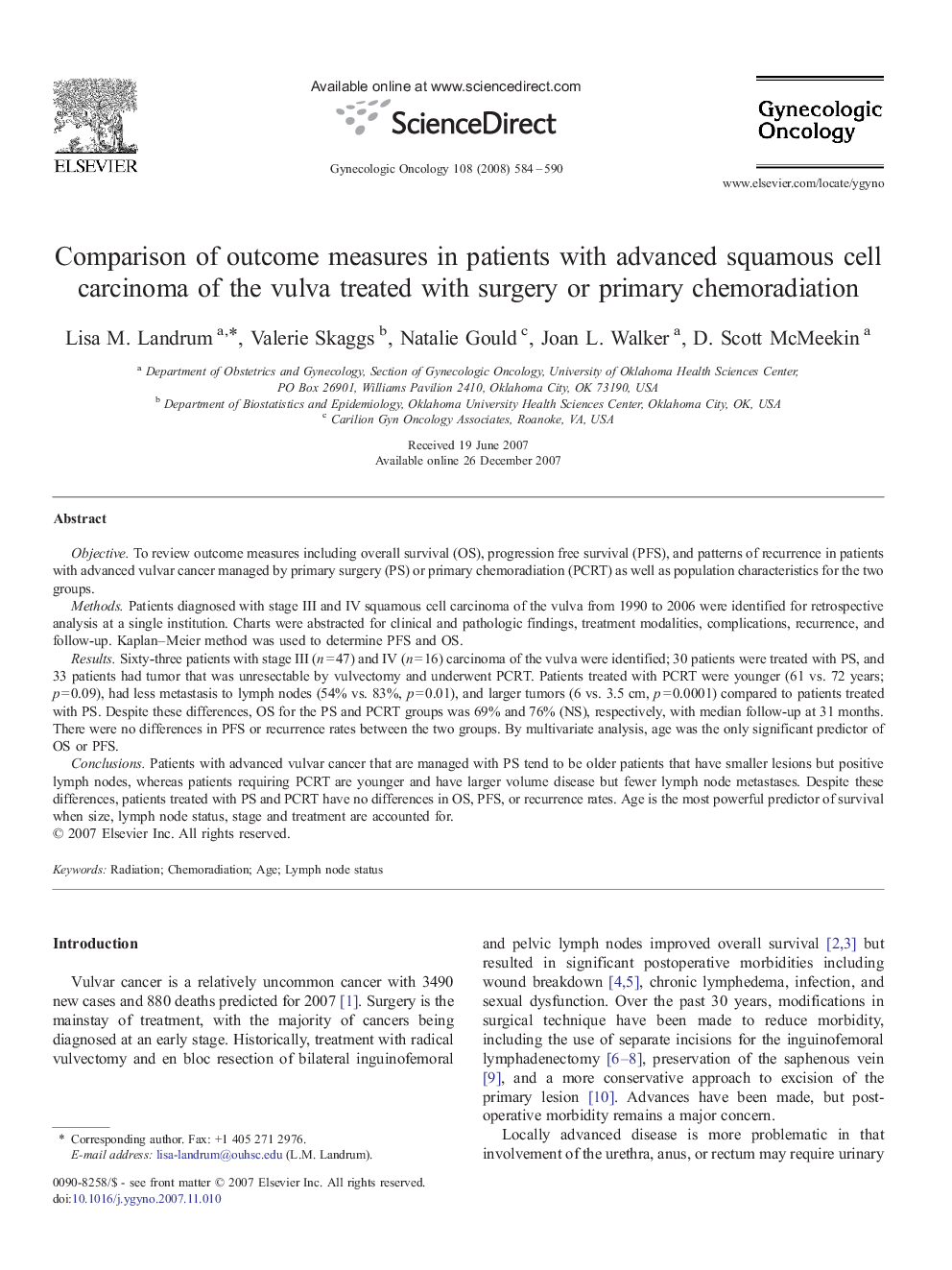| کد مقاله | کد نشریه | سال انتشار | مقاله انگلیسی | نسخه تمام متن |
|---|---|---|---|---|
| 3944811 | 1254232 | 2008 | 7 صفحه PDF | دانلود رایگان |

Objective.To review outcome measures including overall survival (OS), progression free survival (PFS), and patterns of recurrence in patients with advanced vulvar cancer managed by primary surgery (PS) or primary chemoradiation (PCRT) as well as population characteristics for the two groups.Methods.Patients diagnosed with stage III and IV squamous cell carcinoma of the vulva from 1990 to 2006 were identified for retrospective analysis at a single institution. Charts were abstracted for clinical and pathologic findings, treatment modalities, complications, recurrence, and follow-up. Kaplan–Meier method was used to determine PFS and OS.Results.Sixty-three patients with stage III (n = 47) and IV (n = 16) carcinoma of the vulva were identified; 30 patients were treated with PS, and 33 patients had tumor that was unresectable by vulvectomy and underwent PCRT. Patients treated with PCRT were younger (61 vs. 72 years; p = 0.09), had less metastasis to lymph nodes (54% vs. 83%, p = 0.01), and larger tumors (6 vs. 3.5 cm, p = 0.0001) compared to patients treated with PS. Despite these differences, OS for the PS and PCRT groups was 69% and 76% (NS), respectively, with median follow-up at 31 months. There were no differences in PFS or recurrence rates between the two groups. By multivariate analysis, age was the only significant predictor of OS or PFS.Conclusions.Patients with advanced vulvar cancer that are managed with PS tend to be older patients that have smaller lesions but positive lymph nodes, whereas patients requiring PCRT are younger and have larger volume disease but fewer lymph node metastases. Despite these differences, patients treated with PS and PCRT have no differences in OS, PFS, or recurrence rates. Age is the most powerful predictor of survival when size, lymph node status, stage and treatment are accounted for.
Journal: Gynecologic Oncology - Volume 108, Issue 3, March 2008, Pages 584–590